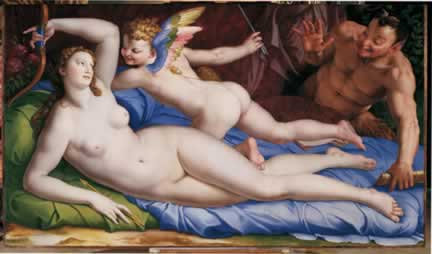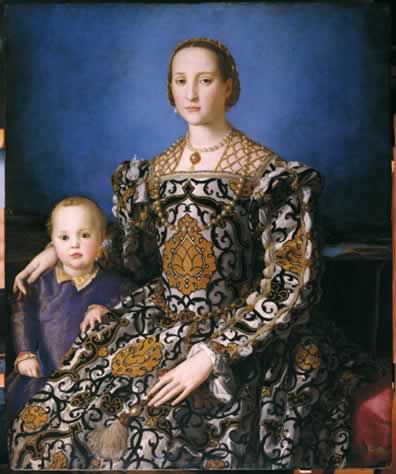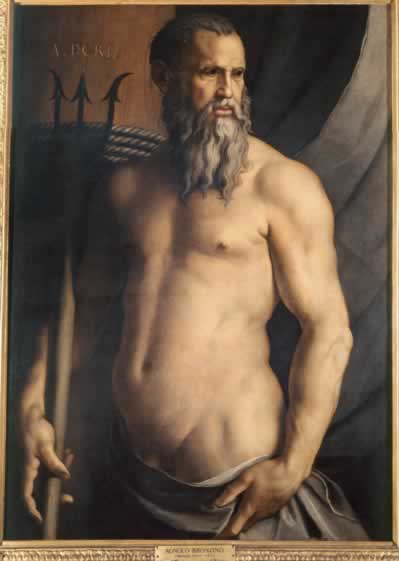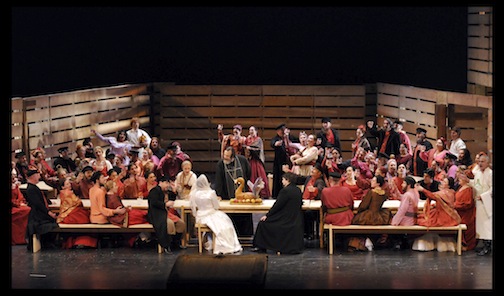To protect its wildlife heritage, India has established 96 national parks that attract visitors from all over the world. This represents one of the largest bases of biodiversity with a range and variety that is unparalleled. These national parks contain more than 500 species of mammals and over 2,000 species of birds, several of which are unique to the Indian subcontinent. Of interest is that much of the flora and fauna of India has entered into the pantheon of the Hindu gods.
Today, national parks encompass over 1 percent of India's total surface area. Prior to independence in 1947, India did not protect its wildlife. By 1970, there were only five national parks, and many species became endangered. Tigers, the symbolic mascot in India were killed so frequently that by 1970, only 1300 remained. In 1972, the Indian government passed the Wildlife Protection Act, which preserves natural parks and sanctuaries and provides for the protection of wildlife, particularly endangered species. A year later, the late Indian Prime Minister, Indira Ghandi, launched “Project Tiger,” in which the killing of tigers was banned and 10 reserves were established aimed at protecting tigers and their ecosystems. This conservation legislation has heralded the recovery of the tiger. Today a total of 27 reserves take part in this project. A recent encouraging report from the Indian Ministry of Environment and Forests estimated that the number of tigers in the wild is now 1706 compared with 1411 in 2006.

Recently, we visited Kanha and Pench National Parks, both of which are situated in Madhaya Pradesh, one of the largest states in central India. This area was famed as a hunter's paradise and was immortalized by Rudyard Kipling whose epic Jungle Book was set in this vicinity. Both of these parks rank as two of India's finest wildlife sanctuaries. Kanha, which was declared a national park in 1955, is one of India's largest and covers an area of almost 20,000 square kilometres although only 300 square kilometres are open to tourism. The Banjaar River forms Kanha’s southwest border and provides a steady water source for the abundant wildlife.
Pench National Park is located about 200 kilometres from Kanha. It is considerably smaller (1400 square kilometres) and tourism is restricted to 150 square kilometres. It was declared a national park in 1983 and takes its name from the meandering Pench River that intersects the park. Both parks are Project Tiger reserves and support a rich variety of wildlife. Guides from the Indian Forest Service accompany visitors on mapped-out circuits. There are two viewing sessions, one in the early morning and a second in the late afternoon. The parks are closed during the hottest part of the day. There are strict entry criteria and only 150 vehicles are admitted to Kanha Park each day. Similar restrictions apply to Pench.
The vegetation in the thick jungle of these parks is very rich. The commonest tree is the sal. The name is derived from the Sanskrit language. The sal is worshiped by both Buddhists and Hindus. Legend has it that the Buddha was born and died under this tree. The sal may reach a height of over 24 meters, has a straight trunk that usually branches at about two thirds of its height. These trees are spaced at short intervals making the forest very dense. Unlike other trees, the sal never loses its leaves completely even during the dry seasons. Another notable tree is the ghost tree, which has a distinctive gnarled shape with a white to greenish gray trunk giving it its ghostly appearance. The hard wood from the tree is used to make window frames, toys and musical instruments, while the white gum resin produced by the trees is harvested for use as adhesives and in cosmetics. Lush sal and bamboo forests are interspersed with vast grassy meadows that support more than 22 species of mammals. This includes a large population of monkeys, various deer and antelope, gaur, as well as predators such as tigers, leopards, jackals, foxes and wild dogs and cats. There are also some 300 species of birds.
Game viewing in India is not as prolific as in Africa. This is related to several factors. In the first place, animal density in India is significantly lower than in Africa. The sal forests and dense jungle growth provide excellent camouflage and this does not allow for easy viewing of the animals. Tourists are compelled to drive on well-marked tracks in contrast to many parks in Africa where jeeps drive off the beaten track to follow the game. Finally, in India, cell-phones and other communication devices are strictly prohibited in the National parks. This makes it impossible to notify other vehicles of an interesting sighting.
The Langur monkey is probably the commonest animal seen. They are sacred in India and are worshipped as the Hindu monkey-god Hanuman. They have a silver grey colouring with a black face and possess long tails and limbs. These active inquisitive monkeys occur in virtually all habitats and are always on the move. Leaves, fruit buds and flowers are their main food and they spend much time in trees, but frequently come down to the ground to socialise and play. Troops of 20 to 30 are led by dominant males. They have a close association with spotted deer providing them with fallen leaves.

Deer are the commonest herbivores. Males are distinguished by solid branched bony antlers that are shed annually. Antlers are made up of a honeycombed bone-like tissue. These antlers are among the most rapid-growing tissues in the animal world. Within one to two months of their shedding, new ones spring up. While in the growth phase, the antlers are covered in "velvet," a layer of skin with a network of capillaries that supplies the budding antlers with the nutrients needed to build the bone mass. After two-to-four months, when the velvet is no longer needed, a ring forms at the bottom of the antler shaft and cuts off the blood supply. The velvet then withers and begins to fall off, a process that is facilitated when the deer rubs his antlers against trees. The cycle is repeated annually.
Antlers are one of the most exaggerated examples of male secondary sexual traits in the animal kingdom. They function as weapons in combats between males and as a sign of dominance for sexual displays. In contrast to the deer species, antelopes do not shed their antlers annually.
The spotted deer (known as the chital) is the most ubiquitous of this family. Possessing three-lined antlers, they occur in herds of 10 to 30 and males battle one another for breeding access to females. They favor meadows and forest clearings. The largest deer in India is the Sambar, which has a dark brown coat. The male members of this species have antlers that can grow to a length of 90cm. These animals have a life expectancy ranging between 16 to 20 years and are the favorite prey species of the tiger.
Another interesting deer species is the Swamp Deer or Hard Ground Barasingha. An adult male swamp deer has huge antlers, which branch to over twelve points. The name Barasingha in Hindi means the 12-antlered deer. Their staple diet consists mainly of grass and leaves. Kanha National Park has been instrumental in rescuing the Swamp Deer from extinction and their conservation effort represents one of the major success stories in Indian wildlife.
The gaur is the largest bovine in the world and is commonly seen in these parks. Also known as the Indian bison, it has a massive head and deep chest. It resembles a water buffalo from the front and a domestic cow from the back; the lower part of the legs is pure white or tan. These are the heaviest and most powerful of all wild cattle and only elephants, rhinos and hippos consistently grow larger. The weight of a male gaur may equal or even surpass that of a giraffe.

One of the most spectacular of all birds is the peacock, which is also sacred in Hindu mythology as the vehicle of the son of Lord Shiva and his consort Parvati. They are seen in groups of three to five hens and an adult cock. These magnificent birds are shy and spend the heat of the day in the shade, emerging to drink at dusk. Peacocks utilize their impressive plumes to attract females in a fanning courtship ritual known as the “peacock mating dance.”
The Asian elephant has played a major role in Indian history, tradition and culture. It is revered by Hindus as Ganesha, son of Shiva and Parvati. There are few temples without sculptures or murals of Ganesha and many even have a tame elephant. For over 3,000 years they served humans as working animals. With the advent of machinery and the tractor, the need for elephants has been greatly reduced. Today, within the parks, they play a major role in tiger viewing. Trackers establish the whereabouts of tigers and once the site is located, radio contact is made and small jeeps arrive with their passengers. Guests have the opportunity to board an elephant and approach the tiger while seated on the elephant’s back.
Of all the animals in the wild, the most majestic as well as the most elusive is the Bengal tiger. India is home to roughly half the world's population of wild tigers. The ancient Romans imported tigers from India for gladiatorial contests. Tigers have been hunted for centuries but it is only since the advent of the rifle that their number dropped drastically. Tiger hunting was the favorite pastime of army officers in the British Raj. However, Indian maharajas also took their toll and there are reports of some who hunted and killed over 1,000 tigers in their lifetime. Two new factors have contributed to the fact that the tiger population had been reduced to the brink of extinction. The first involves the felling of forests to clear land for agriculture and timber. By 1980 only 14 percent of India’s forests were still standing. The second are the poachers whose nefarious activity has contributed much to the demise of the tiger.
The tiger is the largest member of the cat family and unlike the lion, it is a solitary hunter. Males and females occupy distinct but overlapping, well-defined territories. Cubs are raised exclusively by the mother and they remain with her until they are 18 months of age, after which they are forced to leave as she prepares to raise a new litter. Tigers are well camouflaged and extremely difficult to detect. Shere Khan, the tiger featured so prominently in Kipling’s Jungle Book, proved to be rather difficult to find in reality. This is really not so unexpected. There are only some 70 tigers in Kanha and 30 in Pench. Considering the vast size of these parks and the fact that most of the terrain is closed off to vehicles, it is a wonder that any are seen at all.
Due to the vigilance of our tracker and guide, Veerjeet, we did manage to get two sightings. Trackers can get a lead of a tiger’s whereabouts from their footprints on the roadside. When the tiger is on the prowl, the quiet of the jungle is abruptly interrupted by piercing alarm calls. Spotted deer give a sharp ack–ack, the Langur monkeys emit a coughing sound and gaurs snort and sneeze. These intense sounds disturb the tranquillity of the jungle and are the most important signal for the rangers. Jeeps rapidly converge on the scene of the alarm call and at a potential sighting, there is a veritable jungle traffic jam.

During our visit to the parks, we stayed in jungle safari lodges owned by the travel company &Beyond. Accommodation represents the last word in luxury. Together with Taj Safaris, they operate a total of four lodges in Pench and Kanha National Parks as well as in Bandhavgarh and Panna National Parks. In these parks, &Beyond have specially trained naturalists who accompany guests on jungle drives, pointing out and explaining details about the fascinating animals and plants. They are conducted in specially designed open safari vehicles.
Baghvan Pench Jungle lodge comprises 12 charming fully equipped cottages. Stairs lead up to a beautiful rooftop platform where an open wooden deck overlooks the sights and sounds of the Indian jungle. Baghvan has been listed in 101 Best Hotels in the World by the Tatler Magazine and among the top five hotels in India in Conde Traveller’s Hot List.
At the Kanha National Park we were accommodated in the most recently completed luxury camp called Bajaar Tola. The name derives from the Banjaar River and “Tola” means cluster of houses in the local language. Banjaar Tola provides stunning river views from the privacy of a private veranda facing the Banjaar River. It comprises two camps, each consisting of nine elegant tented suites, which feature bamboo floors, canvas roof and walls and glass doors opening onto the veranda overlooking the river. Each camp boasts its own spacious open air dining area.
All told, this trip represented an unforgettable and unique opportunity to experience Indian wildlife first hand.

Fig 1. The magnificent Bengal tiger
Fig 2. Mother and baby Langur monkeys at play
Fig 3. The gaur, which is the largest bovine species in the world.
Fig 4. The dense sal forests, characteristic of Pench and Kanha National Parks
Fig 5. Private viewing deck in one of the tented suites of &Beyond’s Bajaar Tola Lodge
This article was originally published in the Jerusalem Post on 24 April, 2011.
Additional pictures from this as well as other trips are available at www.pbase.com/irvspitz. Further articles and reviews can be seen at www.irvingspitz.com








